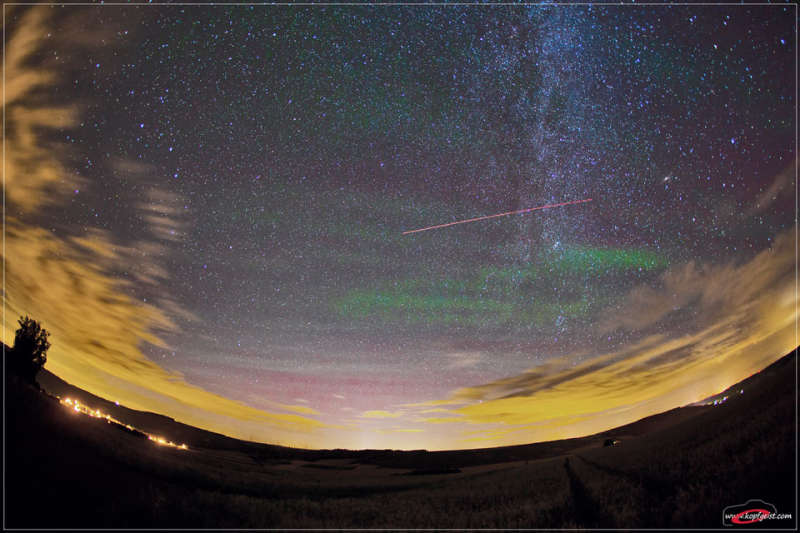Credit & Copyright: Jens Hackmann
Explanation:
Does air glow?
It does, but it is usually hard to see.
When conditions are right, however, a faint glow about 90 kilometers up can be observed,
most easily with a wide-angle long-duration camera exposure.
The same
airglow can also frequently
be
seen looking down -- in pictures taken from Earth orbit
-- as a faint arc hovering
above the surface.
Pictured above between the
beige clouds, above the curving Earth, behind the streaking
airplane, and in front of the
sparkling stars are some
green
bands of
airglow.
The glow is predominantly created by the
excitation
of atoms by ultraviolet light from
the Sun, with the
bands resulting from density fluctuations caused by upward
moving atmospheric
gravity waves.
The above image was taken in mid-July above
Weikersheim,
Germany.
Lightning and
aurorae can also cause air to glow, but result from particle
collisions and are more fleeting.
Astrophysicists: Now
over 500 codes in the
Astrophysics Source Code Library
1999 2000 2001 2002 2003 2004 2005 2006 2007 2008 2009 2010 2011 2012 2013 2014 2015 2016 2017 2018 2019 2020 2021 2022 2023 2024 2025 |
Январь Февраль Март Апрель Май Июнь Июль Август Сентябрь Октябрь Ноябрь Декабрь |
NASA Web Site Statements, Warnings, and Disclaimers
NASA Official: Jay Norris. Specific rights apply.
A service of: LHEA at NASA / GSFC
& Michigan Tech. U.
|
Публикации с ключевыми словами:
atmosphere - атмосфера - атмосфера Земли
Публикации со словами: atmosphere - атмосфера - атмосфера Земли | |
См. также:
Все публикации на ту же тему >> | |
